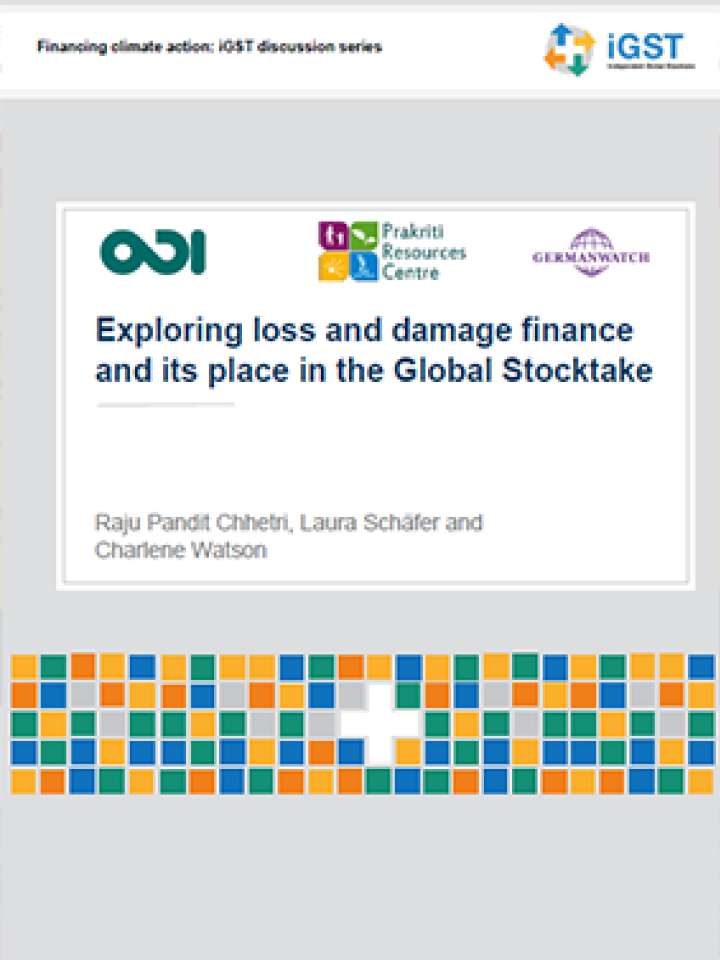Exploring loss and damage finance and its place in the Global Stocktake
This paper provides a state of play for loss and damage finance. This is presented with the background context of what loss and damage is and how the concept has evolved in the UNFCCC process; critical reading for such a highly politically charged topic.
The objectives of the paper are twofold. The first is to outline the practical challenges that are faced by national stakeholders and international climate finance providers, both in progressing the financing of loss and damage and in monitoring and tracking such finance. Mechanisms of providing loss and damage finance must face these technical and political challenges if they are then to ensure the architecture, capacity and expertise underlying it are capable of delivering effective loss and damage finance. This is not an excuse for delay, but a call for iterative learning in delivering an effective design.
The second objective of the paper is to highlight the opportunity that the first Global Stocktake (GST) of the Paris Agreement in 2023 presents for progressing loss and damage finance challenges. Embedded in Article 14 of the Paris Agreement, the GST requires the collective assessment of progress towards the goals of the agreement every five years. Loss and damage is included as a cross-cutting issue in the GST, with information to be included on efforts to enhance understanding, action and support for loss and damage. The GST can, therefore, be used to lay the groundwork and develop a framework around which discussions on loss and damage support, including finance needs, can be had. Ultimately, this paper intends to support a learning-by-doing approach to overcoming the practical challenges of international support for loss and damage, articulating the role for both government and non-governmental stakeholders in moving forward the debate.
Explore further
